Doyle Hemling was in his bedroom when a car door slammed in the darkness.
Hemling lived on Annabelle Avenue, a one-way country road dipping through fields on the edge of Roseville. He heard the car speeding along its shadowed oaks and mailboxes. A dog barked in the distance. He stepped into the hallway and saw a glow against his windows. Moving closer, he realized flames were rising nine feet from his driveway, sharp and glaring against the night.
Hemling thought a tree was on fire. Using his cane, he hurried outside and grabbed a hose from his flower garden. As he sprayed water into the flames, two shapes began emerging from the smoke. At first, it didn’t register. Then, gradually, Hemling’s eyes settled on the truth — two blackened people were on fire.
He heard one of them gasp for air.
Seconds later, his neighbor Roberta Crawley was outside, calling 911.
“There’s two boys on fire!” she said, almost hysterically. “Hurry, please!”
“Can you see them?” the dispatcher asked.
“Yes, I can see them,” Crawley stammered. “They’re not moving, but they’re breathing.”
Hemling was still trying to mute the blaze. Every time he got one spot contained another flared up. One of the strangers had long hair and his mane kept catching on fire. When Hemling finally saw emergency lights, he was still spraying. Parts of the men’s clothes kept re-igniting, over and over.
It was 11:25 p.m. on June 25, 2015.
Placer County sheriff’s Detectives Bryan Mattison and Chris Joyce pulled into Annabelle Avenue’s hectic maze of lights. The report was grim: Both burn victims also had gunshot wounds. A blood-spattered gasoline can had been found a few driveways away. Security footage from a nearby house captured a silver sedan slowly rolling down the street and then, moments later, accelerating back up from a flash.
At nearly the same moment Mattison and Joyce were arriving at the horrific scene, a California Highway Patrol officer was 25 miles away in Sacramento’s Rutter Park, staring at a silver sedan being immolated by flames.
The two young investigators had a lot on their minds.
They weren’t alone.
Twelve days before, Sacramento Police Detective Thomas Higgins had crossed the crime tape at an apartment on Rio Linda Boulevard. It was just after sunrise. Higgins saw fresh bullet holes spotting the faded complex and shell casings from a 9mm, a 38-caliber and 380.-caliber scattered along the street. He could tell some 27 bullets had punched into nearby cars and cut through the old stucco and wood of the apartments. And behind one of those walls, as the onslaught roared, a 50-year-old woman named Stacy Norman was sleeping in her bed. An incoming round hit Norman in the chest. Her adult son called 911, staying by his mother’s side as the blood and life ebbed out of her.
Higgins studied the crime scene: whatever this was, Norman’s apartment wasn’t the target. And there was another casualty. Minutes after the storm of gunfire on Rio Linda Boulevard, another drive-by shooting erupted a mile away at the apartments on Beaumont Street. A bystander had been shot there, too, though that woman was alive. A blue Honda was seen speeding away. Twenty minutes later, a blue Honda was found engulfed in flames at Hagginwood Park. Before Higgins’ day was over, there would be yet another gun attack at the Beaumont apartments.
Higgins had been a cop for 31 years. He was supposed to retire in two weeks.
Three detectives, three murders, two counties, two cars on fire — and four separate shootings events: Over time, the investigations would slowly converge on one chilling saga about the heart of Sacramento’s drug world.
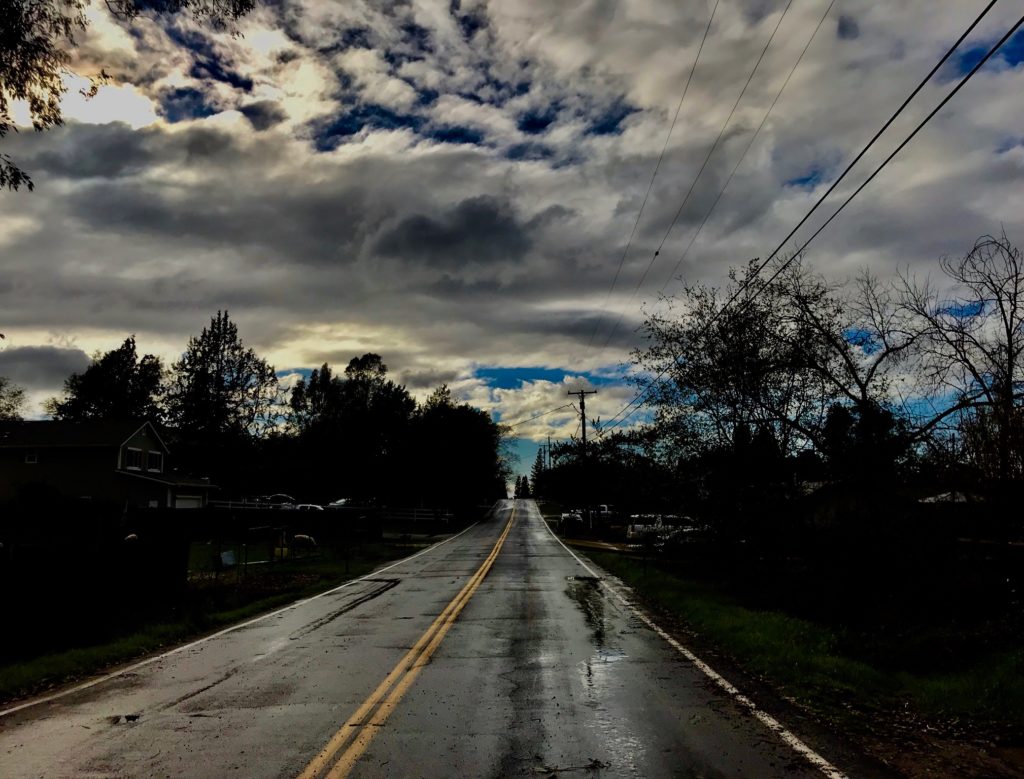
Strangers in the night
At the very moment Hemling was trying to save two men from burning alive, Placer County sheriff’s Deputy Garland Lew was a mile-and-a-half away on East Roseville Parkway, taking a young man to the hospital for mental health treatment. Video from the in-car and outer cameras on Lew’s patrol vehicle show the deputy was having a friendly chat with his passenger when a set of headlights came up fast from behind. The beams careened around Lew’s driver’s side. It was a silver sedan. It was flying as it blew by the patrol car.
“You got him,” the young man urged from the back seat.
“I can’t,” Lew said over his shoulder.
The young man saw the tail lights evaporating. “I think he’s trying to get away.”
“I can’t chase him, man,” Lew admitted, “with you in the car.”
The kid looked on: “Wow he was fast.”
When Lew’s encounter was related to Mattison and Joyce at the Annabelle Avenue crime scene, they had to consider if it was another piece of their puzzle. While both victims were alive, they were expected to die within hours. Mattison was handed a wallet found on the charred gravel near Hemling’s white picket fence. There was a $1,000 in cash inside, along with a driver’s license for Jason Benson, age 33.
Mattison, a soft-spoken former medic who served in the Iraq war, had been a cop for 12 years. Joyce had been in law enforcement for 11 and had already survived a firefight with a cop killer. Mattison and Joyce worked together so much that some called them “the wonder twins,” or just “the twins.” Months earlier, the partners had solved a 24-year-old cold case. But the scene on Annabelle Avenue was like nothing they’d ever encountered.
“There was almost zero evidence at that point,” Mattison later remembered.
On June 29, 2015 the first autopsy was performed on the victim who was identified through fingerprints as 34-year-old Warren Galsote. More than 50 percent of his body was covered in second- and third-degree burns. Forensic pathologist Greg Reybar could see patterns where the gasoline had been poured on Galsote. He found a bullet wound in the right side of Galsote’s skull and a second behind his earlobe.
The next morning, Benson’s body was examined. His burns were mainly around his head, face and shoulders. Reybar extracted two bullets from the back of his cranium.
Years later, when asked if Benson and Galsote were conscious while on fire, Reybar couldn’t say. It was an element of the case that would never be known.
Among the few things the detectives did know in those early hours was that the silver sedan belonged to Benson. The day after his autopsy, it was hauled to the Auburn Justice Center for processing. Mattison was peering at a car nearly burned to its axels. Its windows were gone. The interior was a flame-gutted mess of charred metal and mangled seat frames. Searching the cab, an evidence technician found the scorched remnants of a Beretta pistol. The bullets in its clip had exploded from the heat.
Mattison and Joyce were also finding out more about the victims, who had been childhood friends. Galsote was an on-and-off-again construction worker with young kids. He had long, dark hair and a thin beard. He was known for his sense of humor and his signature laugh. But Galsote’s friends also said he’d begun to reinvent himself as a low-level methamphetamine dealer, selling quarter-pound scores and re-upping for about $300 in product at a time. He had recently decided to elevate his status in the drug world, carrying a gun and aiming to sling full pounds of meth. Rumors were now spreading he’d been killed by the Latin Kings gang or a Mexican drug cartel.
Benson had a different profile. Pale with a broad jaw and short curly hair, he was also a meth dealer, but a fastidious one. He kept his silver Acura meticulously clean. Benson was punctual, reliable. He was generous with family and had numerous female friends. Yet he also had problems. Three months before his death, he took a road trip to Mississippi and someone stole $10,000 from him. Just before that, a drug house linked to Benson got raided by law enforcement. Some blamed him as either reckless or a snitch. The detectives also learned Benson had been the victim of a home invasion-robbery. Word on the street was that, ever since, he’d been hiding from someone called “Big Germ.” Mattison and Joyce were seeing a theme emerge: By the rules of the drug world, Benson was soft, an easy target and not a good dealer. “He trusted people too much,” his ex-girlfriend later said.
The twins did have one good lead. They tracked down Galsote’s girlfriend, Lydiana Gorgostiza, in Fresno. Known on the streets as “Kalani,” she still had access to Galsote’s email account. It pinpointed his last location at a Chevron station in South Sacramento, 30 minutes before he was set afire. Mattison and Joyce were soon watching security footage of Benson’s silver Acura pulling up to a gas pump. Galsote could be seen climbing out of the front passenger’s seat. Benson stayed behind the wheel. But there was something else in the frame. Something ominous. The detectives saw a shadowy, faceless figure in the car’s back seat. It was a hot summer night. His arm was hanging out the window.
In the last text messages Benson sent that night, he seemed stressed out, as usual, this time because a compatriot in the drug scene had been talking to the police. “I can’t save or help him anymore,” Benson texted a female friend. “The streets are going to eat him alive.”
“Why are you tied up with him!!!” his friend exclaimed.
“I’m not anymore,” Benson replied. “I’m different now … live by the sword die by the sword.”
“Stay safe Jason,” the woman messaged back.
Benson’s response came immediately. “Fuck safe.”
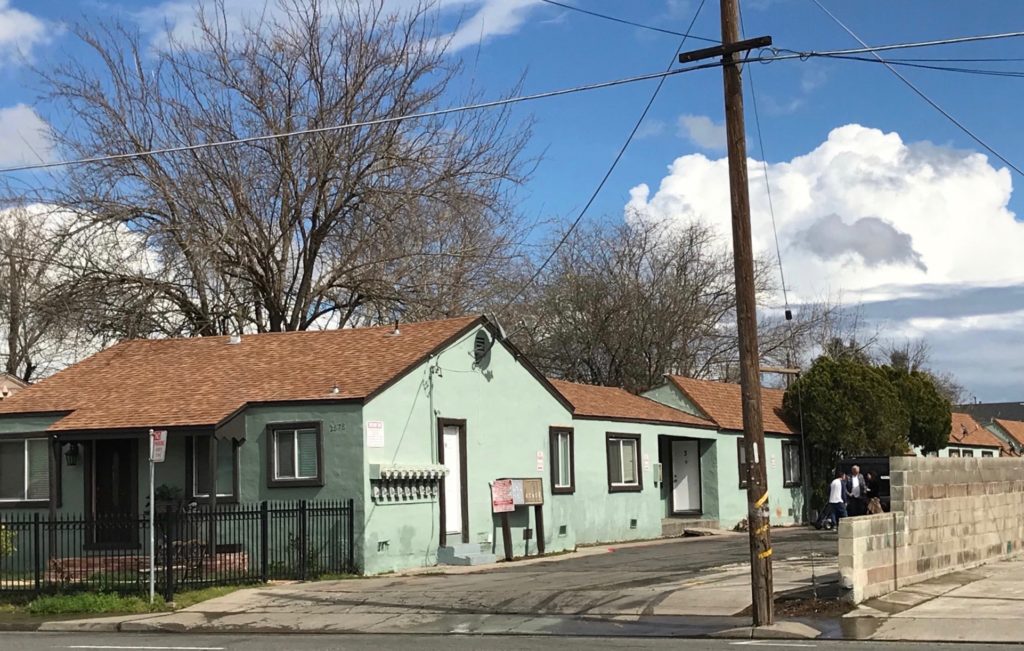
The last call-out
On a blinding day in July, a Sacramento homicide detective drove by a parched, brown yard off South Avenue. He was following the trail of a gun.
Higgins had put off his retirement to solve Stacy Norman’s murder. He was now driving from street to street with Galsote’s girlfriend as she pointed to different locations. Why was a woman tied to the flame-slayings in Placer riding with a Sacramento investigator up in the old north town?
When Mattison and Joyce first interviewed Kalani, she mentioned Galsote had another group of friends who were separate from Benson. She knew them by their street names: “Whetto,” “Goppy” and “Richie.” All of them had histories of violence, and in the weeks before Galsote’s death, all of them had a feud with a group of men they referred to as “the Paisas.”
Kalani also said she overheard a conversation between Whetto and Richie about a series of Sacramento shootings. Mattison and Joyce called the only detective they really knew in the neighboring jurisdiction — a man who’d taught them at homicide school — Thomas “Pat” Higgins.
As it turned out, their tip was directly tied to the case Higgins was investigating.
Following the lead, Higgins and Kalani drove through the neighborhoods between where Norman was killed on Rio Linda Boulevard, and where a woman named Belinda Gamez was shot on Beaumont Street 10 minutes later. Higgins had worked murders before where innocent people died in street wars. Talking to Kalani, he was hearing a similar story.
What Kalani said she’d witnessed between June 3 and June 13, 2015 was convoluted, chaotic and almost nonsensical. It was also the key to knowing what happened to Stacy Norman. But if a trial ended up hanging on Kalani’s testimony, Higgins knew her helter-skelter tale would need corroboration.
Higgins started putting real names to street monikers. “Goppy” was Laurencio Quintero, while “Whetto” was Joshua Smith and “Richie” was Richard Gutierrez. Galsote and Smith had been friends since they were teenagers. Kalani recalled that 10 days before Norman’s murder, she’d driven Galsote and Whetto to River City Guns, where the men asked her to buy a box of .380 caliber rounds for Whetto’s gun. Higgins confirmed that purchase through the store’s sales records. Corroboration point one.
Kalani also remembered that Galsote asked Jason Benson — who barely knew anyone in the group other than him — to buy a gun-cleaning kit at a Walmart. Higgins found the security footage and even bought the same kit to make sure its product code matched the exact purchase Benson was making in the video’s frame. Corroboration point two.
Kalani also said that after the shootings she and Galsote met up with Whetto and Goppy at a drug house in North Highlands. Goppy was wearing a shoulder strap with a gun on each side. Higgins brought photos to the drug house and interviewed a woman there to confirm Kalani’s memory. Corroboration point three.
Finally, after listening to stories about a clash between Goppy’s crew and the Paisas, Kalani said she hid out with the men at an old Motel 6 on 16th Street. Higgins found the manager and verified that the group had stay there through receipts. Corroboration point four.
Kalani’s story was hectic, but it could lead him to Stacy Norman’s killer. And Higgins was beginning to have an idea of who the shooters were.
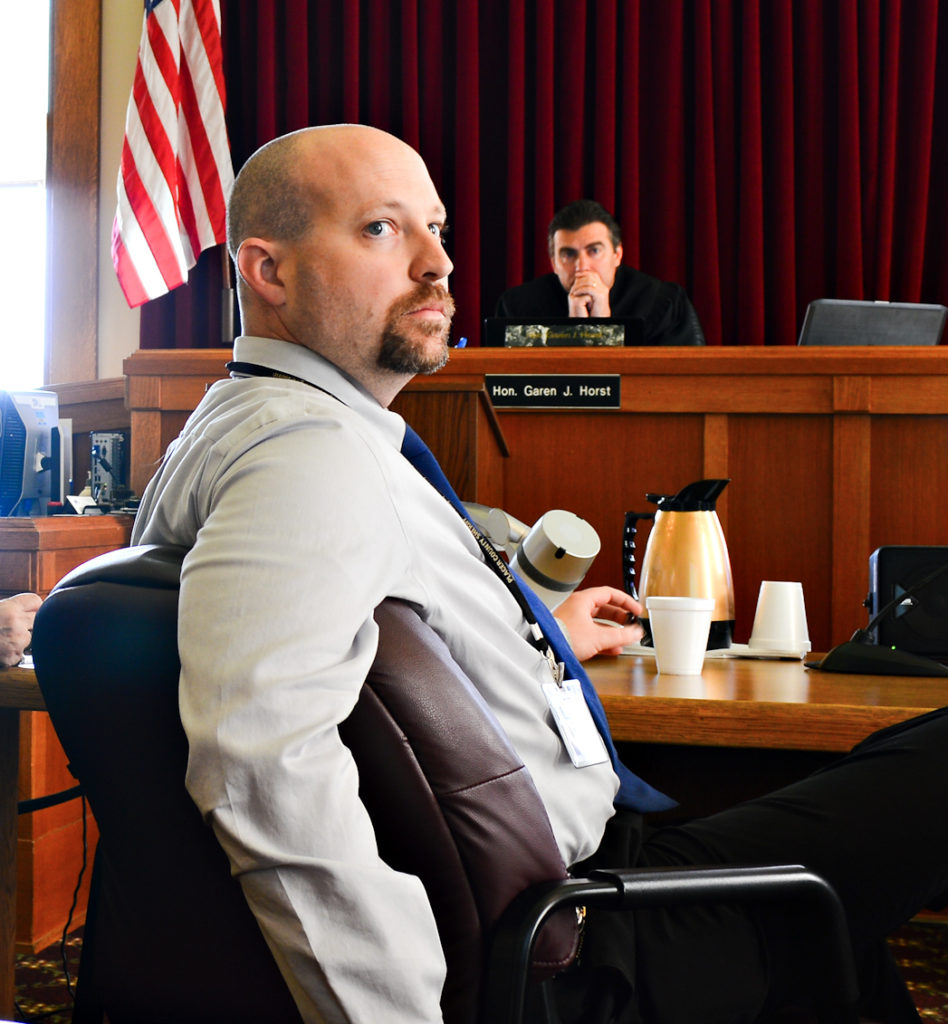
Meeting in ‘the box’
Joshua “Whetto” Smith sat in a white room with a single table at its center. Staring from the other side was Higgins. It was July 9, 2015, and the two were facing off in an interview room at the Sacramento Police Department.
Whetto was 38, with big, broad shoulders, a shaved head and a curled tattoo near his left eye. He was wearing baggy shorts and an odd-colored striped polo. He’d just been picked up for a breaking-and-entering.
Higgins brought up the day all the shootings happened in North Sacramento. “Who were you with?” Higgins asked.
“My friend Warren,” Smith answered, a voice like a bass drum.
“Anyone else?”
“His girlfriend,” Smith replied. “I think her name’s Kalani.”
Higgins asked what Whetto and Galsote were up to, and if they had run into Goppy and Richie that day. “I can’t remember if I did or I didn’t,” Whetto replied in a hoarse grumble.
Higgins suddenly got word that Mattison and Joyce had arrived. “These guys are detectives from Placer County,” Higgins said. “They wanted to talk to you.” The veteran stepped out, leaving Whetto alone with the twins.
Mattison opened up by saying they were there about two men burned alive on Annabelle Avenue. “And your name’s come up,” he told Whetto. “Just as a guy who knows them.”
“I know Warren,” the big man corrected. “I didn’t know the other guy too well. … Warren, he’s a good guy … I’ve known him for 16 or 17 years.”
“Now, obviously, just because of the way it happened, the fire and all that, everybody kind of immediately goes, ’Cartel! Right? Big cartel hit,” Mattison said in a relaxed tone. “But based on what you know, is Warren a guy who’s got thousands of dollars and 80 pounds of meth?”
“He doesn’t,” Whetto grunted.
“The cartel’s not hitting anybody for six hundred bucks,” Mattison went on.
“And,” Joyce jumped in, “he seems like a guy who’s going from motel to motel every night.”
Whetto answered their questions in muted grunts. They tried to ask him about other low-level meth dealers. He said little. They attempted to show photographs of people they were investigating. Whetto didn’t look interested.
Then Mattison asked about Laurencio “Goppy” Quintero. “Do you have any concerns that he did it?”
“No way,” Whetto’s deep voice ratcheted up. “Why would he?”
What Mattison and Joyce didn’t say was that they had interviewed Goppy the day before. He claimed that he barely knew charred victims. When asked what he thought of them, the bald, girth-laden man with tats wrapping his skull gave a bizarre response. “I just thought they were nice people,” he said. “They were happy people.”
Now, with Whetto stonewalling, it was time for Higgins to come back in the interview room. Before leaving, Joyce leaned in and said, “The fact is we got two guys shot in the head and burned. Nobody deserves that, right?”
“Nobody,” Whetto murmured.
Once Higgins returned, he instantly had a question. “So how come you didn’t tell me the guy died?” he asked, referring to Galsote.
“I don’t like talking about it,” Whetto responded.
Higgins decided to play a card. He revealed that he knew that 10 days before the north Sacramento shootings, Whetto had gotten Galsote’s girlfriend to buy ammunition that matched shells found at the Norman crime scene. Whetto clammed up. He grumbled that he didn’t remember what kind of rounds were bought, and he didn’t know who touched them or where they’d gone after that.
Higgins started applying the pressure. “I don’t think you were the shooter there, but I’ve got to explain this,” he demanded, raising his voice. “If you loaded somebody else’s gun, lent somebody a gun, we don’t care about any of that bullshit. But I’ve got a murder to solve!”

Remnants of a savage summer
One afternoon in May 2018, Mattison and Higgins sat in an empty hallway of Auburn’s 124-year-old courthouse, waiting to tell a jury how the tsunami of slayings and shootings three years earlier were all connected.
Their cases broke open in the fall of 2015, when Mattison and Joyce started getting results on their DNA evidence, along with ballistic analysis and data from cell phone warrants. Plus, Higgins had found more witnesses. Perhaps the biggest revelation was that the same .380 caliber pistol used at the Stacy Norman murder scene also fired bullets into the heads of Benson and Galsote. The gun topped a broad pyramid of evidence. Today, the story of what actually happened that summer is pieced together through towering stacks of affidavits, charging documents, scientific reports and trial transcripts.
This is that story.
On June 3, 2015, after convincing Galsote’s girlfriend to buy ammunition for his .380 caliber, Whetto went back to the Beaumont Street apartments, where he was living with Goppy’s disabled brother. Over the next few days, as tensions rose with the Paisas, Goppy and Richie were seen hanging out at the complex, flashing their guns at people. On June 13, at 2:37 a.m., a fight broke out at a unit of the Rio Linda apartment next to Stacy Norman’s flat. Not long after, a friend of Goppy’s appeared from the darkness at the Beaumont Street apartments, saying he’d been jumped by the Paisas and demanding someone give him a gun.
Goppy walked out with a pistol and asked his friend, “Are you ready?” The two then disappeared into the night. They eventually met up with Richie — or at least Goppy did — and they headed off to face the Paisas. Richie had borrowed Smith’s recently reloaded .380 caliber. At 4:45 a.m., Goppy and Richie sprayed the Rio Linda apartments with a hail of bullets. Norman lay dying as they drove away.
Ten minutes later, someone in a blue Honda tried to retaliate against Goppy’s crew, opening fire on the Beaumont apartments. Witnesses heard a man firing back from the upper balcony. When the barrage faded, Belinda Gamez sat shot near her front door. The blue Honda soon found burning in Haggenwood Park was used in the Piasas’ assault.
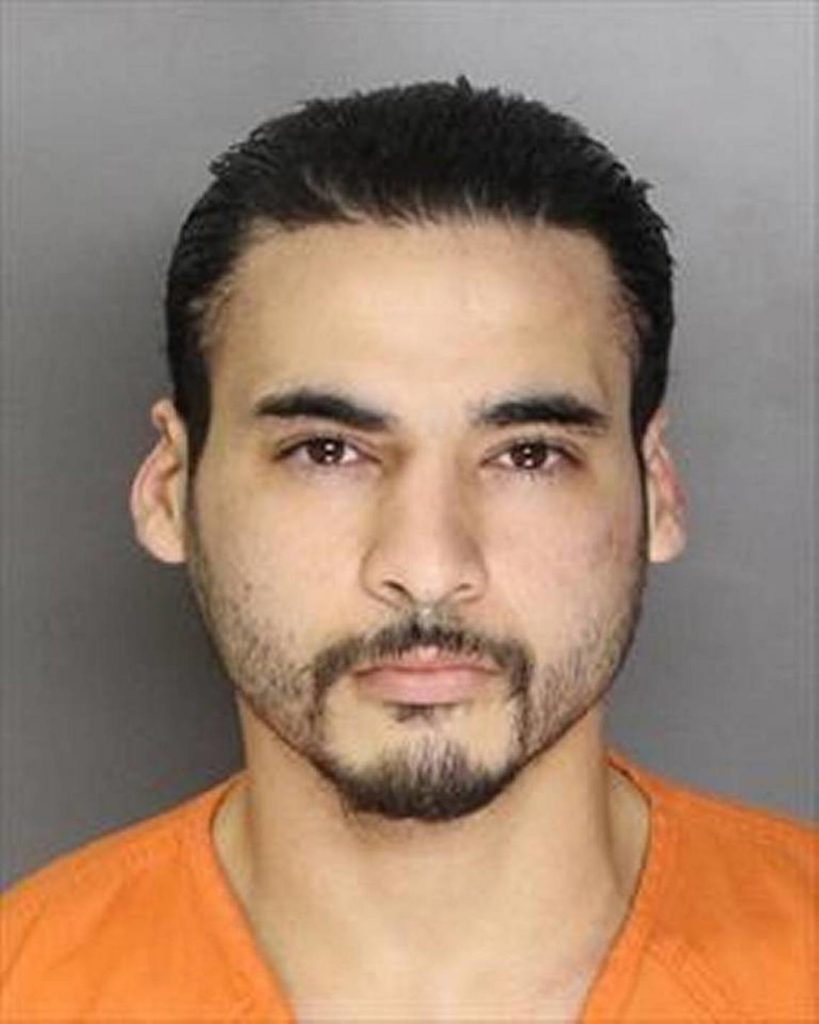
Strangely, the gun attack that happened later that afternoon at the Beaumont apartments had nothing to do with these events; but it did involve Warren Galsote. He’d left a large quantity of meth in Whetto’s apartment for safe keeping. Galsote showed up around 5 p.m., looking to get his product back. Whetto and Goppy were there, but the stash had vanished. Kalani testified that Whetto quickly blamed his disabled roommate. She also told jurors that Goppy just watched as Galsote put a gun to his disabled brother’s head and threatened to kill him. Crying and terrified, Goppy’s brother blamed the apartments’ maintenance man for stealing the drugs. Two different witnesses saw Galsote, Goppy and Whetto storm over to that man’s apartment, kick its door in and fire numerous shots through the wall of the bedroom.
With Sacramento police on the way, the crew took off. That’s when Goppy was spotted with his guns in the drug house. After that, the group fled to the Motel 6 that Kalani had so vividly remembered.
During those hectic hours, Galsote made the fateful decision to bring his two worlds into one orbit by calling Benson. Galsote asked his old friend to buy the crew a gun-cleaner and to give them rides around Sacramento in a car that hadn’t been spotted in the last shooting.
Dominoes were falling toward the flames on Annabelle Avenue.
Kalani testified that Goppy became paranoid, convinced he was “going down” for Stacy Norman’s murder. They drove by her apartment that afternoon and heard from others in the neighborhood she was dead. And now someone Goppy barely knew was aware of that crime: Benson, the luckless, slightly preppy dealer who was on law enforcement’s radar and considered a pushover by some and a songbird by others. At the same time, Galsote still wanted to know what happened to his missing methamphetamine. If Whetto’s roommate didn’t take it, there was an obvious suspect. So, Whetto had Richie return his .380 caliber.
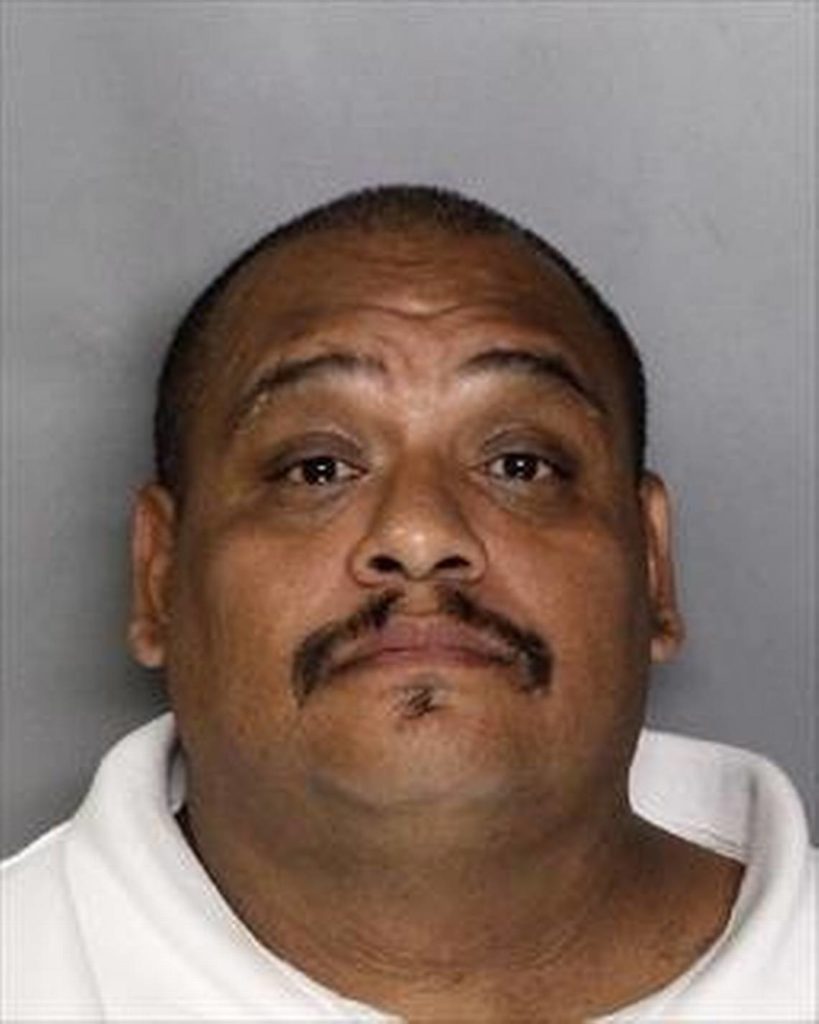
What was happening to the group was, as Placer County Deputy District Attorney Jeff Moore put it, a total breakdown of trust in every direction. One part of the drug crew apparently made a preemptive strike against the other.
What’s known for sure from cellphone records is that on the night Benson and Galsote died, Smith started leaving voice messages for Galsote. Geo-data indicates at 10:52 p.m., as Galsote and Benson were seen on video at the Chevron — and an unknown man’s arm was hanging out of the car window behind them — a signal from Whetto’s phone pinged at the nearest tower. From that spot, data tracks Whetto’s phone from South Sacramento all the way to the border of East Roseville and Granite Bay, near the spot where Galsote and Benson met their end in flames.
Hemling saw the glow in his window at 11:25 p.m. Minutes later, after the silver sedan sped by Garland’s patrol car, Whetto’s phone pinged at a cell tower in that neighborhood, too.
And Whetto’s DNA was found on the handle of the blood-stained gas can.
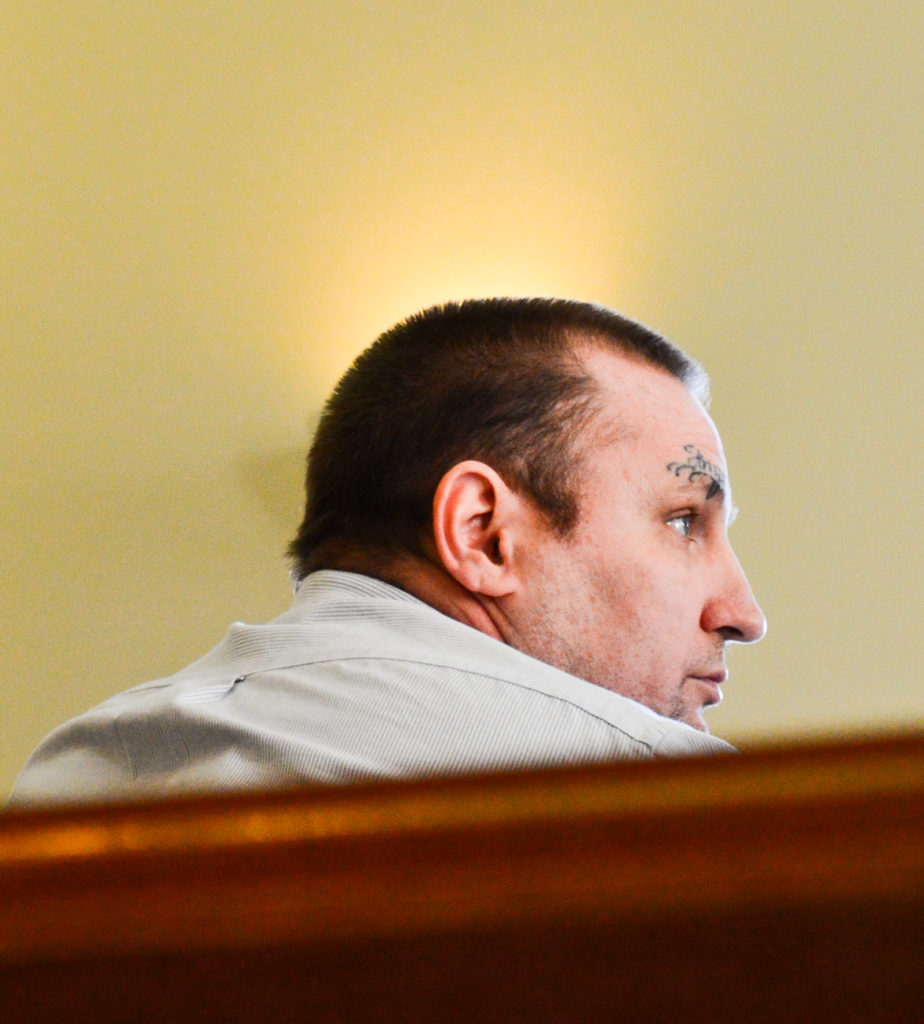
In February 2018, Sacramento Deputy District Attorney Laura West persuaded a jury to convict Laurencio “Goppy” Quintero and Richard “Richie” Gutierrez of Stacy Norman’s murder. They were sentenced to 25 years to life in prison.
Whetto’s trial in May 2018 for the executions of Galsote and Benson didn’t go as smoothly. He was represented by local defense legend Linda Parisi, who hammered at every weak spot in the evidence. Parisi reminded jurors that cell tower data could only show where Smith’s phone was, but not who held it. She noted that DNA evidence could say her client touched the gas can, but not when. She told jurors that Galsote and Whetto had been friends since high school, while Goppy had just watched Galsote threaten to kill his disabled brother with a gun. And where was the now-convicted killer, Goppy, on the night of the burnings? How many people were actually in the back seat of that sedan?
“In the underworld of methamphetamine sales in Sacramento, the normal values of these players don’t equate to the normal values of our society,” prosecutor Jeff Moore countered in his closing arguments.
Yet the jurors were only allowed to hear snippets of what happened in Sacramento. Seven of them apparently couldn’t accept that Whetto would set a childhood friend on fire for the fragmented motives they’d heard. The jury was hung.
In mid-March, faced with Moore expanding and recalibrating his case — and faced with spending life in prison if a second jury convicted him — Joshua “Whetto” Smith pleaded guilty to two counts of voluntary manslaughter. He was sentenced to 16 years in state prison. Moore said he accepted the deal “with a heavy heart,” but, with a sworn duty to protect the public, he just couldn’t risk Whetto going free. A seven-five jury split is, he noted darkly, “the toss of a coin.”
The families of Benson and Galsote say they’re haunted by the sadistic nature of the crime. The question of Goppy’s involvement that night still shadows their story. During the reading of victim impact statements, Benson’s father said he keeps having nightmares about his son’s final moments. Benson’s sister screamed at Whetto to look at her while she was speaking. Both Benson and Galsote’s mothers cried and struggled for breath when recalling their sons.
Mattison and Joyce, who wrote more than 50 warrants and interviewed dozens of people over nine months, have their own reflections. For Joyce, what stands out is working alongside a master detective like Higgins on his final case.
“You pick up so much being around someone like that,” Joyce said, “and you try to take as much as you can from that wealth of experience.”
Mattison said he thinks about the victims’ families. “This crime ruined so many lives — Warren’s kids — and obviously the conviction doesn’t change anything,” he said. “But we work a lot of cold cases, and we know about the suffering families go through when they never get any closure. They may not know why it happened, but they know how. We want to at least give them that.”



Be the first to comment on "Midnight Burning: Three murders, three detectives and the remnants of a savage summer"